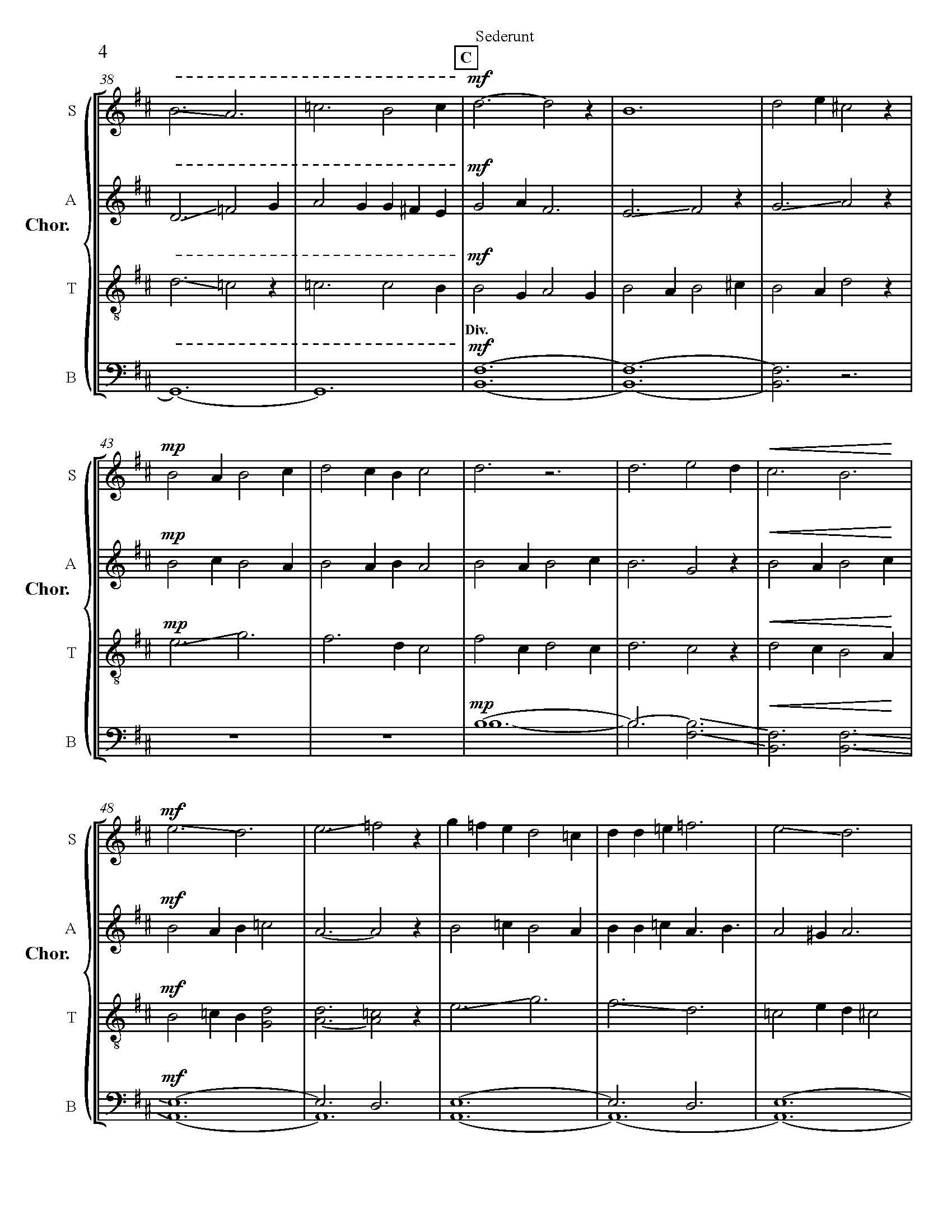Sederunt: A Perotin Caprice
For solo SSAA quartet and 8-part mixed chorus (2015) 10’
Commissioned by the DePauw Chamber Singers, Kristina Boerger, music director.
US Premiere on January 10, 2016, Greencastle, IN; Depauw University Chamber Singers, Music Director Kristina Boerger. European Premiere on January 18, 2016, Cathedral of Notre-Dame, Paris, FR; Depauw University Chamber Singers, Music Director Kristina Boerger.
Program Notes
My dear friend and colleague, Kristina Boerger, is currently (2021) Director of Choral Activities at Augsburg University in Minneapolis. Dr. Boerger early served as Choral Director at Carrol University (WI), and subsequently at DePauw University (IN). We had a magnificently successful collaboration in 2012 when Carroll University commissioned my Stabat Mater for the Concert Choir’s tour of Italy, which I joined as a tenor ringer. When Dr. Boerger was planning a 2016 Paris-focused choir tour of France for the ensemble at Depauw, I chose the 13th-century master, Pérotin, as my starting point. He was one of the primary members of the Notre Dame School of Polyphony, and the Depauw ensemble was planning a performance at the famous cathedral. The style is characterized by drones, complex rhythmic figures, relative harmonic freedom, and long stretches of music on a single vowel sound.
My work is based on one of Pérotin’s groundbreaking motets, Sederunt Principes, but it can only accurately be described as an “arrangement” in the last third of the piece. The closing section employs Pérotin’s notes verbatim, except in the aspect of voicing. For one, the chorus proper here alternates the material with a solo upper-voice quartet. More significantly, I’ve re-scored things to feature the sopranos and altos (now usually sung by women), specifically as those voice parts would never have had an opportunity to perform this music publicly in Pérotin’s time.
After a brief intro by the solo quartet, my piece begins relatively true to Pérotin’s music, with the exception of a few chromatically altered notes. The primary difference at the start is the glacial pace at which chords change in my piece. (We can’t know for sure what Pérotin’s tempi might have been, but it’s highly doubtful they were ever performed anywhere as slowly as in my piece.) The effect is oddly modern, as dissonant chords that might have flown by “acceptably,” are now considerably highlighted. As the work progresses the tempi gradually increase, while simultaneously diverging ever more from the original. Eventually, the somewhat jazzy effect of the earlier “out” chords fulfill their promise with glissandi and passages resembling (perhaps) The Swingle Singers. The true “arrangement” section follows, consisting only of Pérotin’s original notes, and now at what would likely be much closer to his intended tempo. The solo quartet begins here, soon joined by the chorus, but eventually, the music returns exclusively to the quartet. In terms of “fidelity” to the original, my work thus presents an organically evolving ABA form.
Sederunt: A Perotin Caprice
Princes sat, and spoke against me; and sinners persecuted me.
Sederunt principes, et adversum me loquebantur; et iniqui persecuti sunt me.




